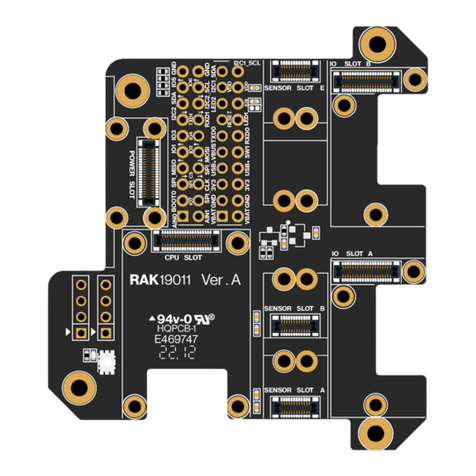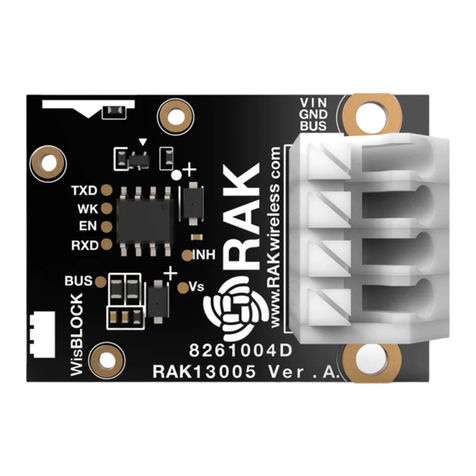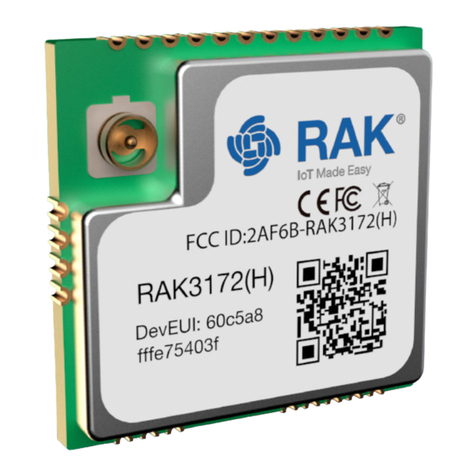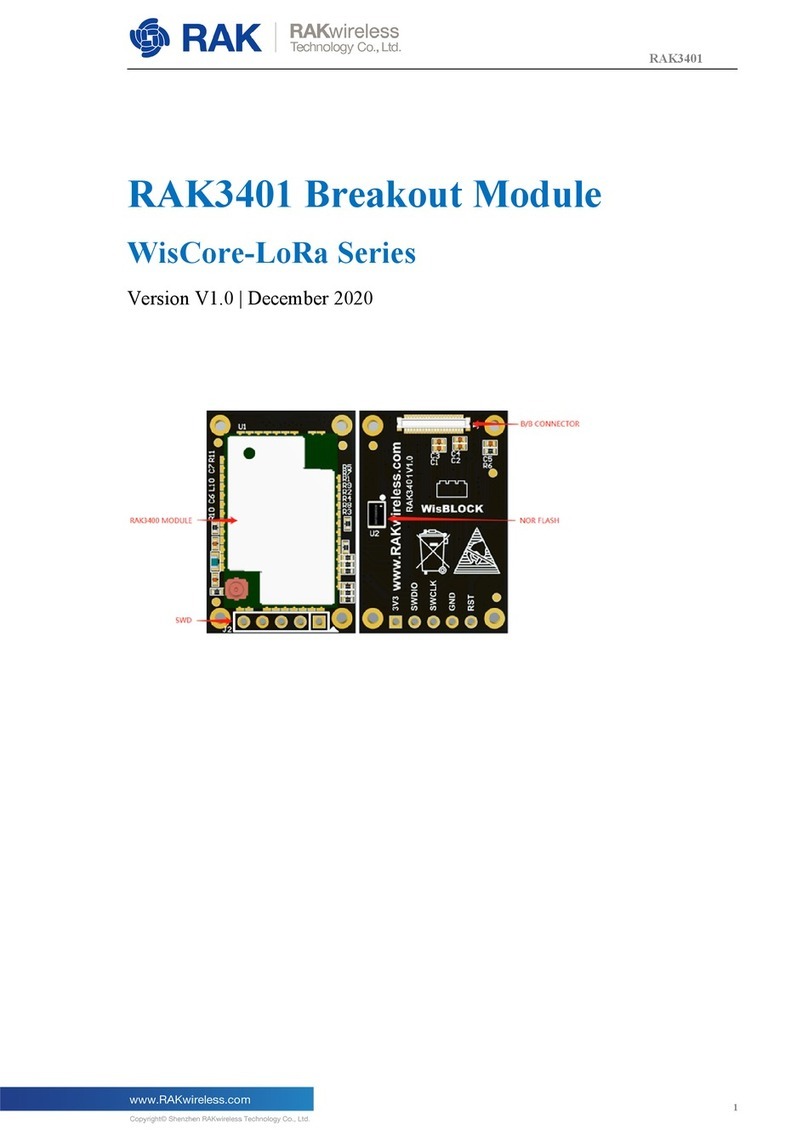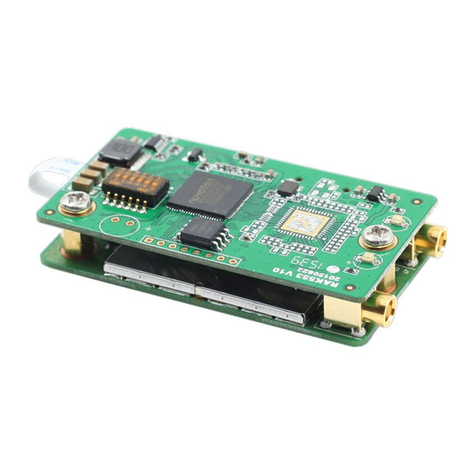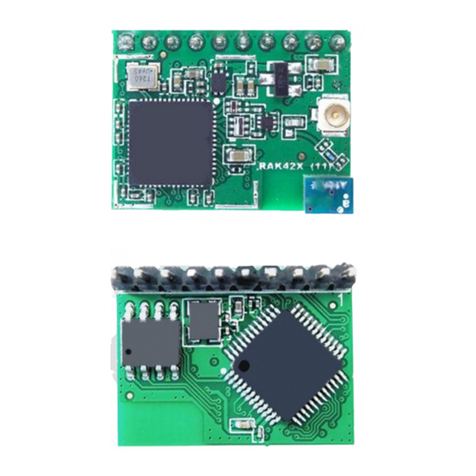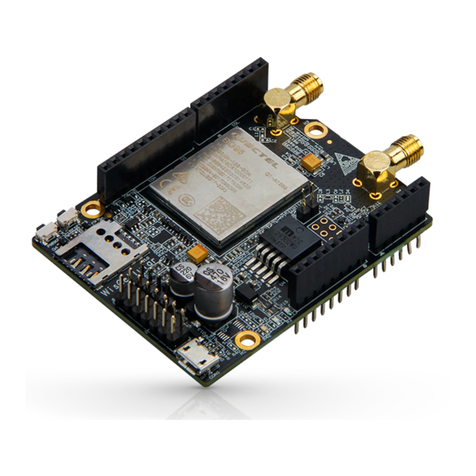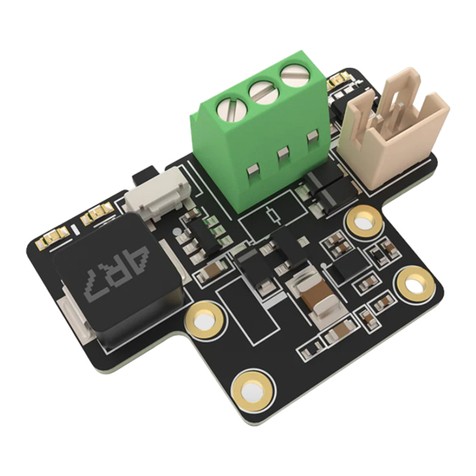
Table of Contents
1 Overview..................................................................................................................................................... 5
1.1 Introduction......................................................................................................................................... 5
1.2 Package Contents............................................................................................................................. 5
2 WisTrio LoRa Tracker RAK5205...........................................................................................................6
2.1 Overview............................................................................................................................................. 6
2.2 Functional Diagram........................................................................................................................... 7
2.3 Interfaces............................................................................................................................................ 7
2.4 Operating Frequencies..................................................................................................................... 8
2.5 Board Pin Out.....................................................................................................................................8
2.5.1 P1.............................................................................................................................................8
2.5.2 P2.............................................................................................................................................8
2.5.3 J11........................................................................................................................................... 8
2.5.4 J12........................................................................................................................................... 8
2.5.5 J22........................................................................................................................................... 9
2.5.6 J25........................................................................................................................................... 9
2.6 Micro-B USB Interface.................................................................................................................... 10
2.7 LEDs.................................................................................................................................................. 10
2.8 RESET Push Button........................................................................................................................10
2.9 Working Mode.................................................................................................................................. 10
2.10 Power Requirements.................................................................................................................... 11
2.11 Environmental Requirements...................................................................................................... 12
2.12 Mechanical Dimensions............................................................................................................... 12
3 LoRa Antenna......................................................................................................................................... 13
3.1 Overview........................................................................................................................................... 13
3.2 LoRa Antenna Dimension.............................................................................................................. 13
3.3 LoRa Antenna Parameter.............................................................................................................. 13
4 GPS Antenna........................................................................................................................................... 14
4.1 Overview........................................................................................................................................... 14
4.2 GPS Antenna Dimensions............................................................................................................. 14
4.3 GPS Environmental Requirements...............................................................................................14
4.4 GPS Antenna Parameter................................................................................................................15
5 Schematics.............................................................................................................................................. 16
6 Usage and Examples.............................................................................................................................20
6.1 Source Code.................................................................................................................................... 20
6.2 Required Software...........................................................................................................................20
6.2.1 USB Driver........................................................................................................................... 20
6.2.2 CooCox IDE......................................................................................................................... 20
6.2.3 Flash Loader........................................................................................................................ 20
6.2.4 Tool Chain............................................................................................................................ 20
6.3 Importing Source Code...................................................................................................................21

